On day 9, we woke up at around 5 Am local time in the freezing cold weather and had to get ready to leave early since the pass that we were to cover that day could get really sunny later in the day leading to a possible sunstroke. When I opened my eyes however, I realised I was feeling really really sick and couldn’t even move my body without great difficulty. I actually wanted to drop out of the trek that day and wanted to be taken back to the base camp by ambulance. However, my brother and aunt coaxed me and helped me get up, go out and brush my teeth and get ready.
After this I had a hot cup of tea and some biscuits followed by some tablets, and I was feeling much better already. I was feeling sick because the high altitude was new to me and my body hadn’t adjusted yet. By this time, the pony & porter guys start barging into your rooms and eat your head to leave fast. This allows them to complete the trek faster and go back to the start point earlier.
Anywas, as we started, we had one last look at the beautiful North face of Mount Kailash illumined by the beautiful morning sunrise. After this we started on our day 2 trek with by first walking for almost a Kilometer or so before we crossed a small, rickety bridge over a stream of water. After this, we got on our pony and started our ascent of the trecherous Dolma La pass. Dolma La is the Tibetan name of Goddess Parvati, wife of Lord Shiva believed to be residing at Mount Kailash. The pass can be treacherous if the weather is not favourable. It is said that one can cross the pass only if the goddess bestows her grace upon him/ her. Blessed we were, that the weather on our route was just perfect. Not sunny, but not raining either. Just the perfect weather to enjoy the trek and take in the beauty.
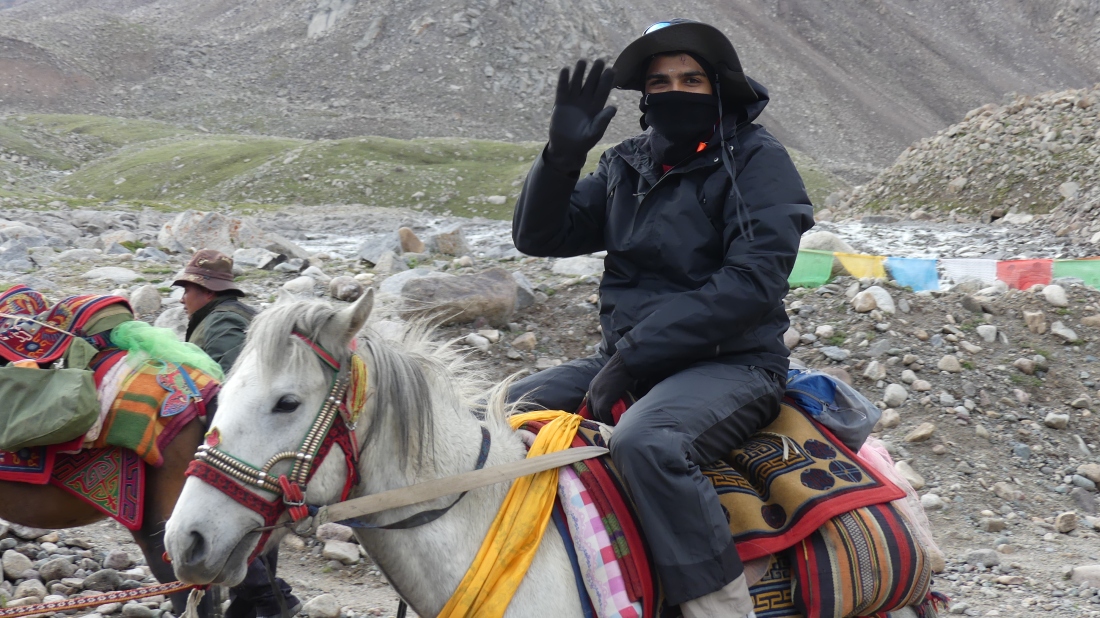
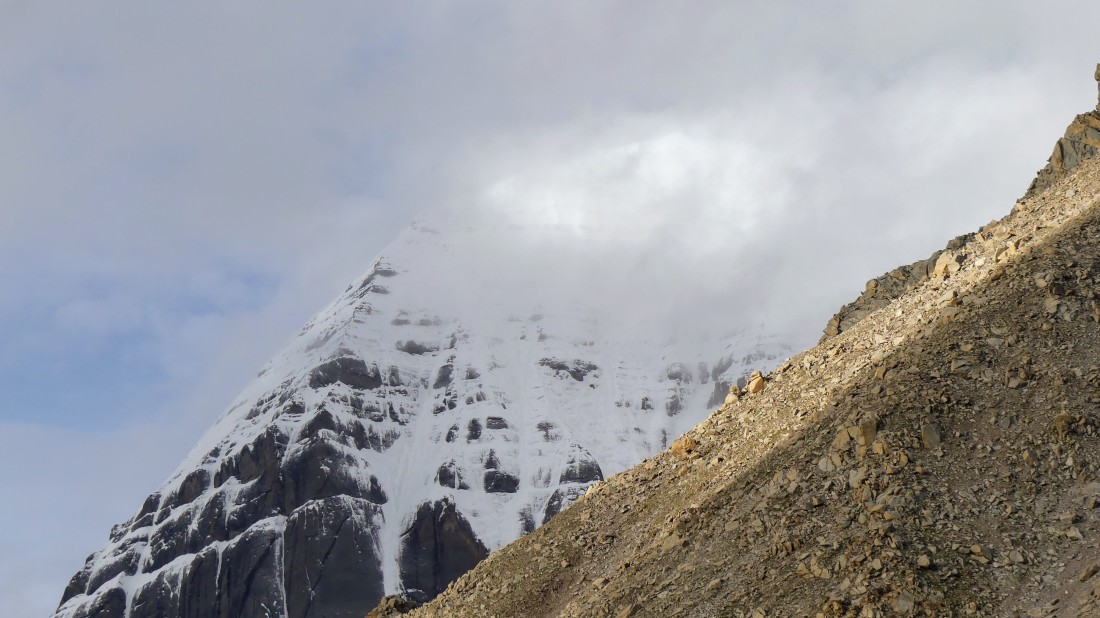
Though the entire distance of the pass was only around 4 Km Up and 4 Km down, It was going to be a long and tiring journey, as it is not meant for the weak headed. As we climbed about 300 meters, the path got narrower, the pass got steeper and we needed to take a break every 100 meters or so. There were boulders all throughout the path, making the trek even more arduous without a clear path in sight.
After we had climbed about 2 and a half Km or so, we could see on our right, way below, some small emerald green puddles of water. This was the Gauri Kund lake which was in reality, humongous, but looked small to us because of the height perspective. It was in this Gauri Kund, that Lord Ganesha was born. When Mother Parvathi was to have her bath in this lake, she created Ganesha out of the soap she was using, breathed life into him and made him stand guard. When Lord Shiva arrived at that spot, he was stopped by Ganesha, who obviously had no clue who he was. Enraged by this, Lord Shiva cut off Ganesha’s head but was then admonished by an inconsolable Mother Parvathi. To make amends, Lord Shiva found brought the head of a wandering elephant and placed it back on Ganesha. This was how Ganesha came be known as he is remembered and revered till date.
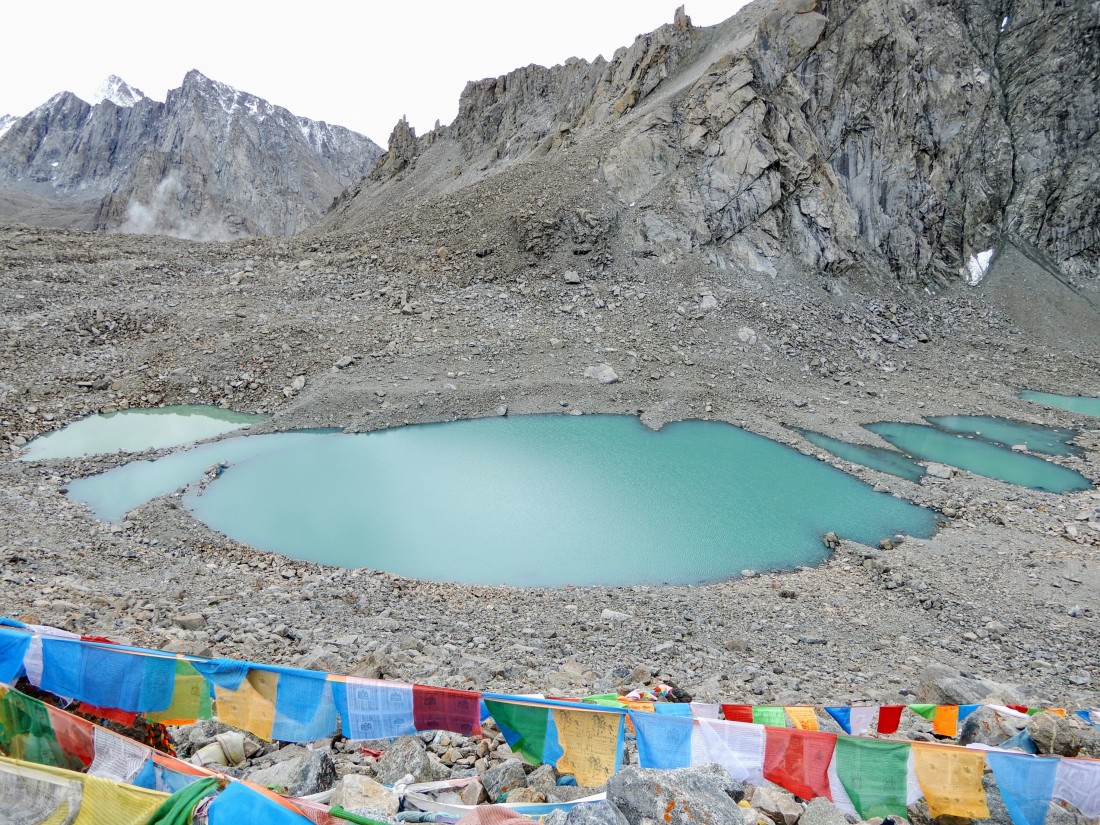
We finally reached the top of the Dolma La pass, which stood at 5600 meters above sea level where we were asked to get off the pony and start our trek down the pass. The weather on top was freezing cold and we could see snow lining up the sides of our path. The climb down was a very very challenging one and took almost 3 hours to finish. On the way, we also saw the “Axe of Karma”, a rock formation which resembles an axe and is worshipped by the Tibetians.
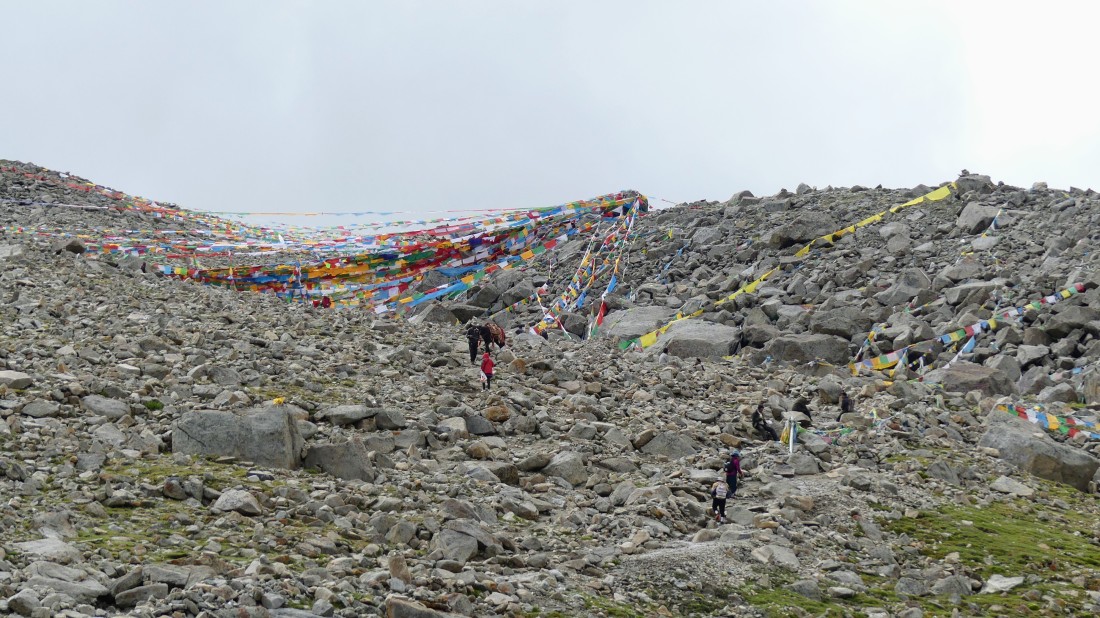
I would like to share a very interesting incident that happenned on our way down. While we were coming, myself, my aunt and our family friend Shankar Ram uncle were descending down almost together. At this point, Puneet, the most experienced member of our group, who had chosen to walk the entire trek, had actually caught up with us and was helping us with the trek. Suddenly, someone came to my aunt and said that a south indian gentleman from her group had fallen down. Everyone immedietly assumed that it was my uncle who had fallen and Puneet immediately started running in the reverse direction to go and help my uncle. As he reached the spot where my uncle was, he saw him walking comfortably. Just at the moment when he went to enquire, my uncle slipped, but Puneet was there to catch him and blocked his fall. This was a very mystical incident and my uncle was saved in the nick of time. This might seem like a pure co-incidence, but Bhagawan Sri Sathya Sai Baba always used to say “Co-incidences are miracles where God chooses to stay anyonomous”. Truly, this was an incident where God chose to stay anyonomous.
After we finally completed the pass and came back to level ground, we finally sat in a tent and took some good rest while waiting for the car to pick us up and take us back to base camp. On our way back, we even got a glimpse of the magnificent East face of Kailash which is not visible very often. We also got to see a certain area of the mountain where there were different colours of soil on the same area. We could see as many as 4 colours of soil. There was also a hilarious incident that I would like to narrate here.
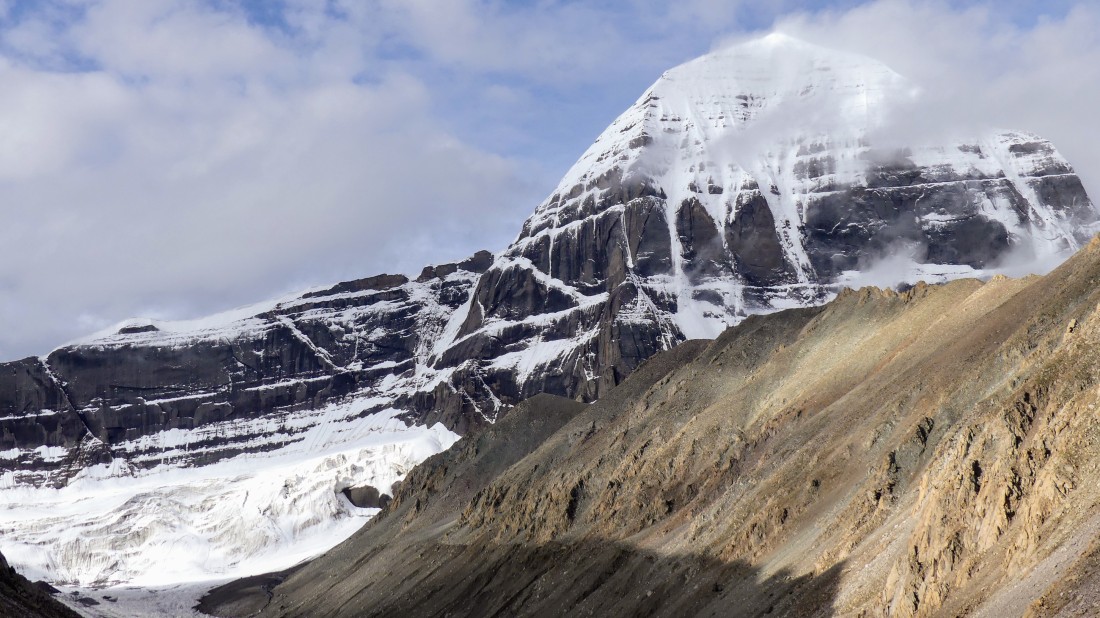
One of the ladies from our group had walked down the entire Dolma pass ahead of the entire group and started looking for us after giving her jacket to her Horseman. But when she was unable to find any of us, she thought we were much ahead and started walking even further, leaving her horse behind. When we all came down , we could see her horse, but couldn’t find her. Immedietly our guide started searching for her but all efforts went in vain. All of us were alerted that this person was missing and they started going forward in search of her. Finally, they found her way ahead in the next village looking for us. While this was a relief, this was also a rather stupid thing to do, trekking in the snow and rain without any protective gear.
We finally reached our hotel at Darchen around 3:30 PM Local time and were overwhelmed with a melange of emotions having successfully completed the Parikrama. The Kailash parikrama is considered to be one of the most sacred spiritual destinations and we had successfully completed it. The feeling was surreal to say the least and I firmly believe that everyone should go for it atleast once in their lifetime.
The next day, we left from Darchen and went to lake Manasarovar where we spent a lot of time and even had our bath there. It is believed that taking bath at Mansarovar cleanses you completely and washes away all your sins. (I really hope it’s true. Got a lot banking on that). And with that, we completed all the major agendas of the trip, returned home with a feeling of exuberance and exasperation of the entire trip, carrying with us a lot of fond memories close to our heart.

Thank you dear readers for following my blog. I hope I did a decent job and I really hope to resume my blog on my next trip.
Om Namah Shivaya
Praise be to Lord Shiva





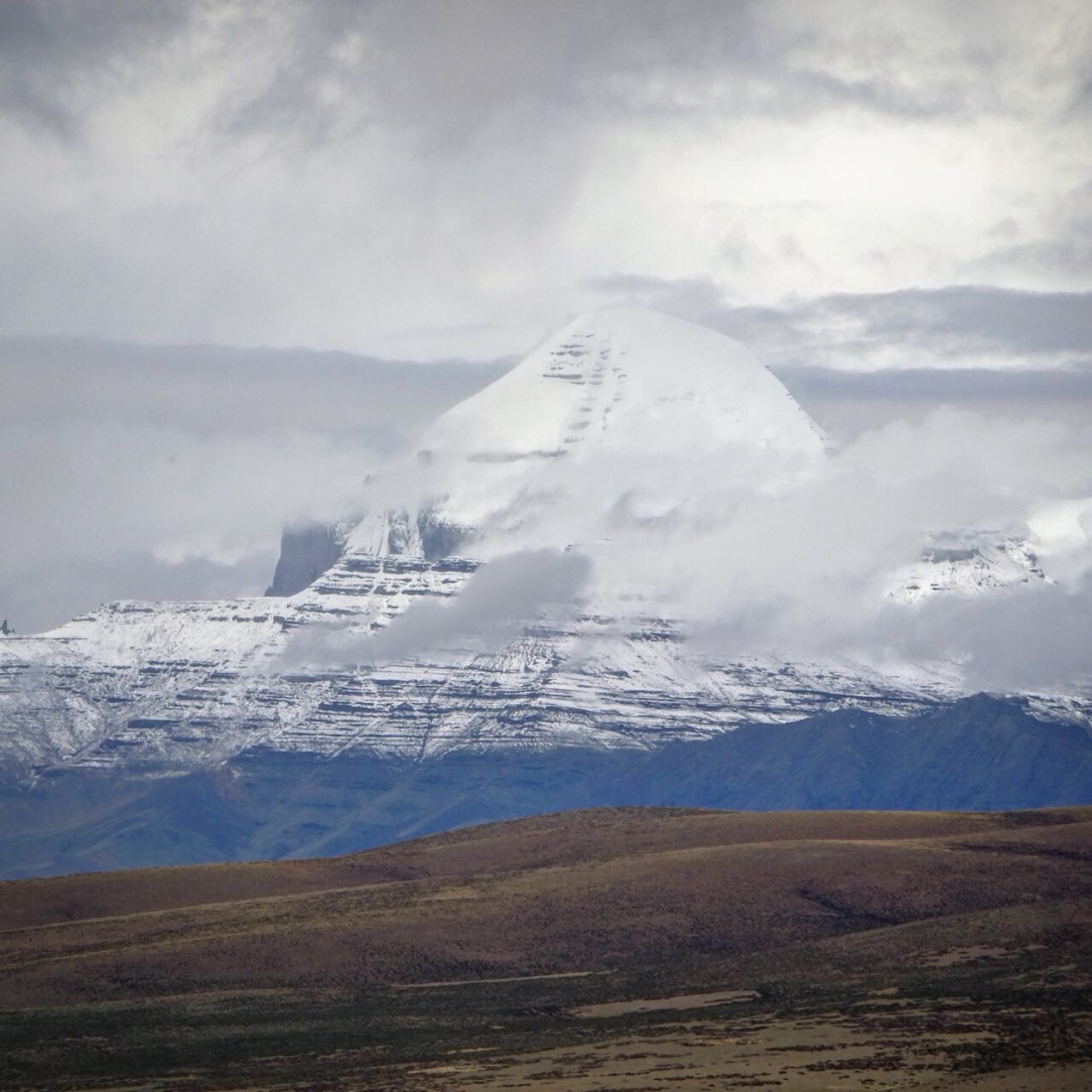





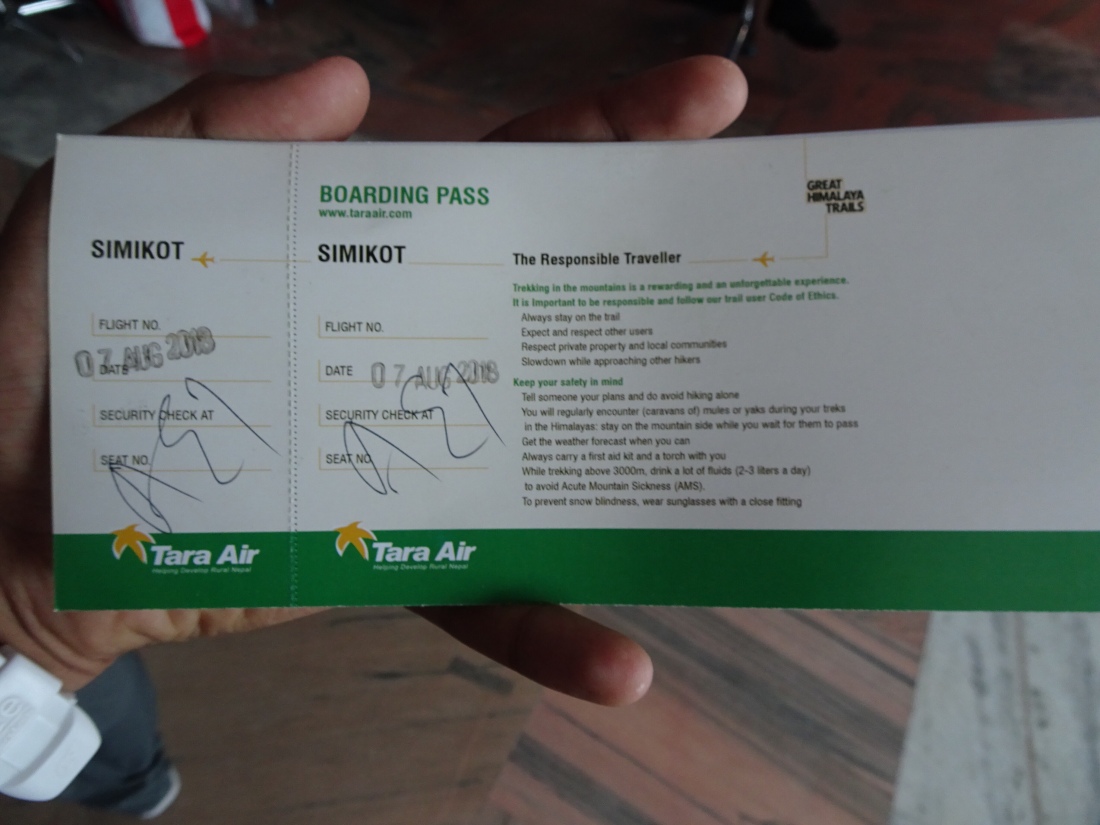



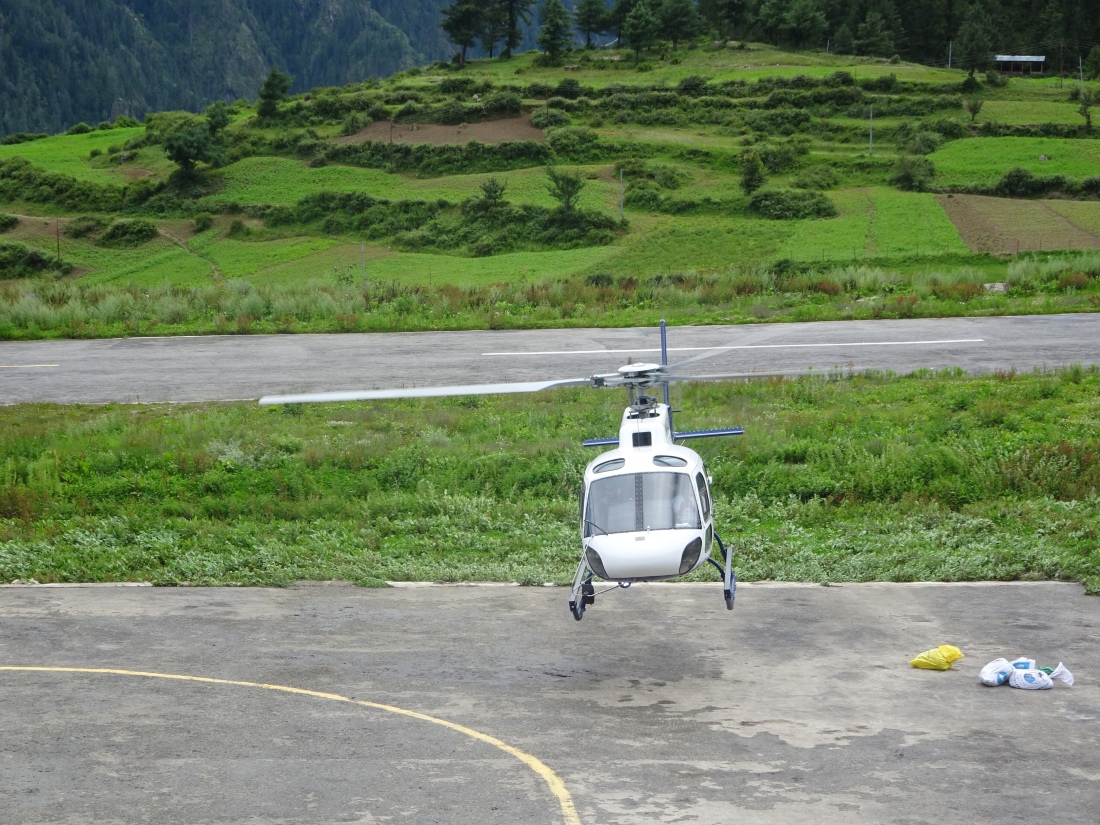












 At this time, I think it would be right to talk a little about our group. While in the government Yatra, the groups are chosen based on a lottery system. But when going through a private operator, a group of people come together and go on the trip. One may think that the group is manually decided and whoever wants can go, but it isn’t so. Whoever gets the calling, goes, as simple as that.
At this time, I think it would be right to talk a little about our group. While in the government Yatra, the groups are chosen based on a lottery system. But when going through a private operator, a group of people come together and go on the trip. One may think that the group is manually decided and whoever wants can go, but it isn’t so. Whoever gets the calling, goes, as simple as that.
